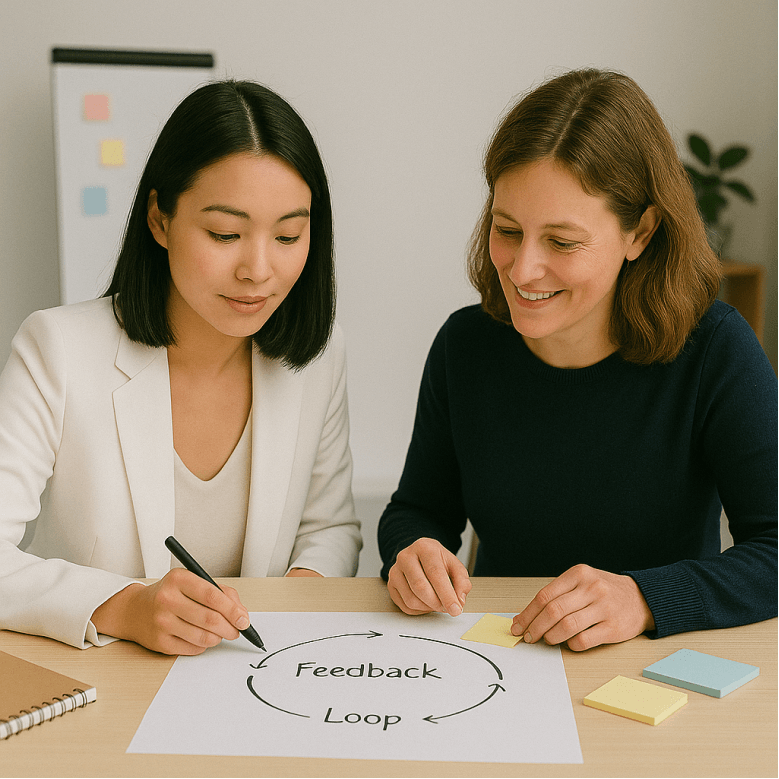Updated: May 6, 2024- 10 min read

To say that diversity and inclusion are long-overdue conversations in the tech industry is an understatement. Sure, diversity has been a hot button issue with FAANG companies in the last few years, but have we really been talking about it in the right way? Or have the same people been sitting in the same boardrooms, and saying all the things that were said in the last diversity meeting? That’s not progress, that’s ticking diversity off of the to-do list and forgetting about it.
Luckily, things seem to be moving in the right direction, and the credit goes to those who have been championing the cause of fairer, more representative hiring practices. The product industry is taking the issue of diversity very seriously, and there are plenty of reasons to be optimistic about the progress being made.
Today, we’re going to look at what’s happening with diversity in the product industry, why it matters, and hear from the experts on what teams can do to attract and retain diverse talent.
The State of Diversity in Tech
As we’ve already mentioned, diversity has become a top priority for the entire tech industry in the last few years, but especially now in 2021. Following the hard work of people of color, women, and the LGBT+ communities in the industry, a light is being shone on the lack of inclusion in the industry more so than ever.
But in 2020, CNBC reported that although FAANG and other tech companies were releasing annual diversity reports and aiming for transparency in their efforts to increase inclusion…nothing was happening. For example, between 2014 and 2020, the number of black employees at Facebook went from 3% to 3.8%.
Amazon’s numbers were slightly better, but when you look at the breakdown of who they were hiring and where, it’s easy to see that the distribution of non-white employees is uneven as you go up the career ladder. Most new diverse hires were in the lower-level jobs, such as in warehouses and delivery workers. Diversity among decision makers remained relatively unchanged. At least for now.
Does that mean that tech is an unwelcoming space for those with different skin tones, religions, genders, abilities, or sexual orientations? Not at all! We see a thriving community of product lovers from all backgrounds making waves in their companies and in their careers every single day. But we all need to do the work to make sure the challenges those individuals have to face in order to thrive get smaller every day.
How FAANG Companies Are Facing the Challenge
It wouldn’t be right to point out the problems in the tech industry without recognizing all of the great work that is going into tackling them.
In October of 2020, Google and Alphabet CEO Sundar Pichai made a public statement on Google’s commitment to racial equality, and on the progress Google made in 2020 towards their commitments. These include increasing supplier demand, supporting small businesses and students, donating to racial justice organizations, and supporting Black+ Google employees throughout their careers.
Facebook is also tackling the issue of diversity in its hiring practice by running a variety of initiatives designed to build an equal workforce. For example, Women LEAD and Women LEAP are two programs that aim to bolster the next generation of female leaders.
At Apple, overall representation of women is indeed growing. In 2020, 53% of new hires came from typically underrepresented groups in tech, and among new hires in the under-30 group, 38% were women compared to 31% in 2014. Apple is also championing equal pay for all, having achieved pay equity in every country it operates in.
Every individual has a different experience at work, and it would be wrong to gloss over those which are negative, but product people on the whole love their jobs and have found a kind of family within their teams.
Why Does Diversity in Product Matter?
Product Management itself thrives on diversity. In product development, teams are strengthened by having a variety of backgrounds, perspectives and opinions in the room, as any product leader will tell you.
The digital product world is vast, and not limited to Silicon Valley. From Lagos, Nigeria to London, England, pockets of impactful tech talent can be found across the globe.
We often say that no two Product Managers are the same, so no one expects you to fit a certain mold or bring one particular skill set to the table. And the same can be said for your personal background/demographic.
Having a diverse workforce has a knock-on positive effect on a company’s outputs. That’s especially true in the tech sector. Products are made for everyone, which means your products need to be built by everyone.
There are some very real examples of how products go wrong when they’re built with only one type of customer in mind.
1. Twitter’s Biased Crop Algorithm
In 2020, it was discovered that Twitter’s image-cropping algorithm was quite heavily biased. A user uploaded an image of a white man and a black man next to each other in different positions and with different filters (eg, side by side, flipped, different backgrounds etc) and each time the white man was shown in the preview, and the black man was cropped from sight.
Testing this to see if it's real. pic.twitter.com/rINjaNvXaj
A barrage of users jumped on board, and ran a variety of experiments, all resulting in the same or a similar bias.
I wonder if Twitter does this to fictional characters too. Lenny Carl pic.twitter.com/fmJMWkkYEf
To their credit, Twitter was very quick to respond to the discovery, which they may have been completely unaware of until it was uncovered by users. The product team apologized for the bias, and set out how they tested their system, and what changes they were planning to make to set it right.
Being transparent about what went wrong here was the best move that Twitter could have made, simultaneously making moves to improve their product and regain the trust of their global and diverse users.
2. Made by Men, For Men
In her TED talk, Caroline Criado-Perez, the author of Invisible Women, goes into the underrepresentation of women in tech and how it impacts the products we all use. For example, women often find using the most popular smartphones uncomfortable to use in ways that men don’t because typically their hands aren’t the “right” size.
She makes the case that there exists a systemic gender bias in tech design.
“Most of the people who’ve been designing the phones are men, so they’ve been designing for the male hand size.”
This problem alone might elicit a ‘so what?’ from some. And yes, having to shift the phone around in your hand to be able to reach the top left corner of the screen is a very first world problem. But the domino effect of letting this bias continue is dangerous. Outside of the consumer product space, crash test dummies are being designed based on the average 20-30 year old man, which means product safety is only being tested against one type of body. But we all use cars, trains, bikes and planes.
Is Your Diversity Performative?
If you’ve read down this far, it’s safe to assume that you care deeply about diversity, and want to make sure that there’s space for everyone in your teams and in your organization. Perhaps you want to know whether what your company is doing is the right thing or not.
The problem with some businesses’ approach to diversity is that it’s become something of a bandwagon that needs to be jumped on, unless you want to face online criticism. This kind of performative diversity may seem harmless, but it explains why everyone seems to be talking about diversity, but the state of diversity within companies is hardly changing.
For example, if your company uses things like Black History Month or International Women’s Day to launch huge marketing campaigns and draw in new users without doing anything to serve, highlight, or raise up those groups, that’s purely performative. This is something that users are generally aware of, and they won’t be afraid to call you out on it when they see it.
In the technology industry, the most important issue to tackle is hiring biases. Thanks to the huge shift to remote, new horizons are opening up for teams who no longer have to hire based on location. Those who can afford to move to Silicon Valley may be just as talented as those who can’t. But now that you’re not tied to a Bay Area office, you can afford to find pockets of talent further afield.
How to fix it: attracting and hiring diverse talent
It’s not all doom and gloom! Recognizing the challenges we face is the first step in overcoming them. Any good Product Manager knows that a challenge is nothing if not an opportunity for innovation and change!
The shift to remote has presented a new opportunity for teams to hire outside of the usual talent pockets. Accessible online education in tech fields has opened up new possibilities for individuals wanting to break into the space.
At #ProductCon earlier this year (February 2021), Kylie Fuentes (VP of Product at Salesforce) and Kasha Stewart (Head of Product at Walt Disney) both spoke on what product teams can do to attract and hire talent in the new remote world.
With more and more companies making the shift to remote, with many expressing directly that this will help them to hire more diverse talent further afield, we can expect to see positive change in the WFH era. The future is looking bright!
Putting Our Money Where Our Mouth Is: Product School’s Commitment to Diversity and Inclusion
We don’t want to talk about diversity and inclusion without doing anything to back it up. So let us take this moment to make sure our intentions are clear. Some of the things we’re committed to doing are…
Creating and maintaining online community spaces that are safe and welcoming for everyone.
Highlighting the diverse talent in the industry, such as Black Product Leaders, Women Product Leaders, and Latinx Product Leaders. (You can also find our Women Product Leaders Podcast right here.)
Offering scholarships to help break down the barriers to tech.
Making inclusion and diversity a top priority when choosing webinar speakers, instructors, podcast guests, #ProductCon
guests, and when faced with any other opportunities to champion representation.
Maintaining diverse hiring practices. We’re a proudly international team, with multiple native languages spoken.
In 2021, we’ve partnered with Wise, to bring $90,000 worth of education scholarships to those from diverse backgrounds.
Learn More About Diversity in Product
If you’re wanting to educate yourself further on how to build products that serve a diverse world, check out some of these great talks from product leaders:
How to Design Inclusive Products by Google’s Sr. Product Manager
Building Inclusive AI Products by Google Product Lead, Tulsee Doshi
Building for Billions by Google Head of Product Inclusion, Annie Jean-Baptiste
Updated: May 6, 2024





